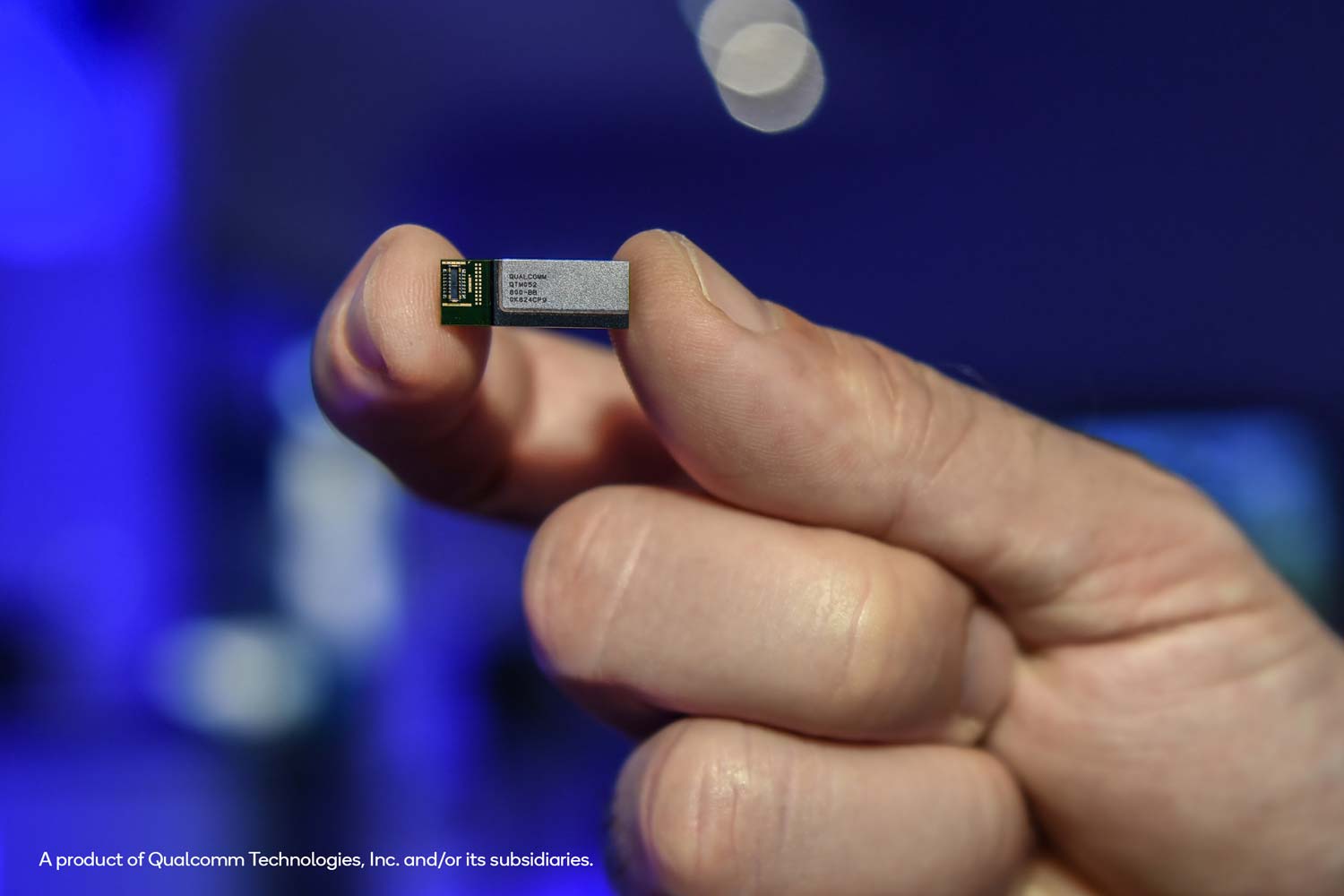5G Phones Get Closer with Qualcomm's mmWave Antennas
The millimeter-wave-capable modules unveiled by Qualcomm today help phones benefit from the promised speed boost of 5G networking.
You might look at the 5G millimeter-wave module Qualcomm unveiled today (July 23) and see just another cellular component for your future smartphone. But Sherif Hanna, director of product marketing for the chip-making giant, looks at that same module and sees a big leap forward for smartphone users.
"This little thing is like a domino, basically," Hanna told me as we looked at the thumbprint-sized module Qualcomm has built for the next generation of phones. "It opens up everything else that comes afterwards."

The modules announced by Qualcomm today — the QTM052 mmWave antenna module family and the QPM56xx sub-6 GHz RF module — are the first fully-integrated 5G NR millimeter-wave and sub-6 GHz RF component built for mobile. They can offer modem-to-antenna capabilities across different spectrum bands. And because the modules are so small, they integrate easily into mobile devices — so much so that Qualcomm actually built it so that up to four modules can be included on a phone.
With these part now available to Qualcomm's phone-building partners, we've just taken a big step toward 5G-capable devices landing in the hands of consumers, Qualcomm says.
"Because these modules exist, millimeter wave-capable smartphones can exist," Hanna said. "And because millimeter wave-capable smartphones, the [5G] networks can launch."
If you've given any thought at all to the wireless industry's march toward 5G, you likely know that one of the major benefits of the new networking standard for end users like you will be much faster speeds. But getting the kind of performance 5G promises requires using millimeter-wave frequencies, Hanna explained to me.
MORE: 5G Networking: The Definitive Guide
Sign up to get the BEST of Tom's Guide direct to your inbox.
Get instant access to breaking news, the hottest reviews, great deals and helpful tips.
That's a challenge, as millimeter-wave isn't well-suited to mobile. Its higher frequencies don't travel as far, and signals can behave erratically and be easily blocked. Throw in the particular use cases around mobile phones — everyone holds their phone differently, potentially blocking antennas, and your environment is always changing as you move around — and Qualcomm faced a lot of challenges developing modules suitable for 5G-ready smartphones.
To deal with those challenges, Qualcomm says it's equipped the modules with support for advanced beam forming, beam steering and beam tracking to improve range and reliability off millimeter-wave signals. Shrinking the modules down to a size where several can fit on a single phone also helps: if your hand is blocking one of the modules, Hanna says, the others can still send and receive signals.
A device that can handle millimeter-wave signals is capable of delivering the faster speeds promised by 5G. And that has potential effects for everyone from wireless carriers to smartphone users to app makers, according to Hanna.
Carriers whose unlimited data plans still reserve the right to throttle your data speeds if you go over a certain threshold could potentially raise those thresholds or do away with them entirely (the former option seems more likely) since the cost of transmitting all that data will be less. Smartphone owners who may have waited to perform some tasks on their phone until they could connect to Wi-Fi may be more likely to use faster 5G networks for more tasks. And app makers could find themselves tinkering with new software that takes advantage of these faster speeds.
Both the QTM052 and QPM56xx modules work with Qualcomm's Snapdragon X50 5G modem, which the company announced back in February. Twenty device makers have committed to using the X50, Hanna says, and "a good portion" of those are creating millimeter-wave capable devices.
Expect the first products equipped with the modules Qualcomm announced today to be mobile hotspots used to help with 5G tests and rollouts. Those devices are expected by the end of the year. The first smartphones containing these millimeter-wave modules are expected in the first half of 2019.
Philip Michaels is a Managing Editor at Tom's Guide. He's been covering personal technology since 1999 and was in the building when Steve Jobs showed off the iPhone for the first time. He's been evaluating smartphones since that first iPhone debuted in 2007, and he's been following phone carriers and smartphone plans since 2015. He has strong opinions about Apple, the Oakland Athletics, old movies and proper butchery techniques. Follow him at @PhilipMichaels.

